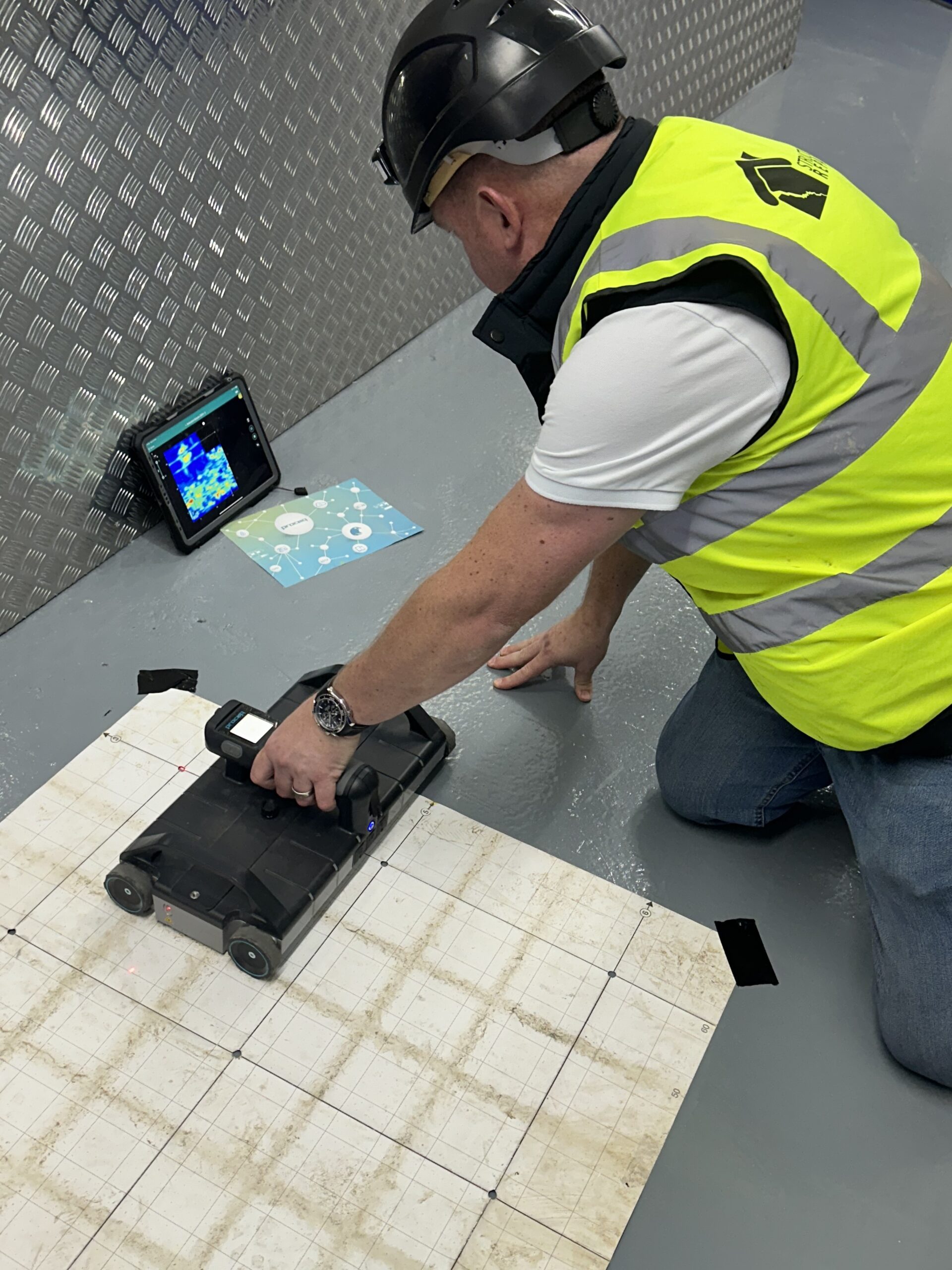Exploring the Secret Benefits of Concrete Scanning in Building Projects
In the realm of contemporary construction practices, the utilization of concrete scanning technology has become an essential device for ensuring project effectiveness and architectural integrity. From improving precaution to precisely spotting utilities concealed below the surface area, the benefits of concrete scanning are multifaceted. The capacity to streamline project timelines and reduce costs while preserving existing structures is a testimony to the value this technology gives the building industry. As we explore the nuanced advantages of concrete scanning, it ends up being apparent that its influence prolongs much past surface-level assessments, supplying a look into the detailed web of advantages waiting to be uncovered.
Enhanced Safety And Security Steps
Making use of advanced concrete scanning innovation boosts precaution on construction sites by providing accurate discovery of possible threats hidden below the surface area. This technology enables building and construction groups to recognize rebar, conduits, post-tension wires, and various other blockages before excavation or exploration, considerably minimizing the danger of mishaps. By identifying these aspects exactly, employees can prevent harmful important architectural elements, therefore protecting against injuries, delays, and costly repair work.
Furthermore, concrete scanning plays an essential duty in ensuring the stability of existing frameworks throughout renovations or growths. By identifying weak points, voids, or degeneration within concrete components, engineers can attend to these concerns proactively, enhancing the overall safety and longevity of the building. This proactive approach not just mitigates the threat of architectural failings however additionally lessens the capacity for accidents created by unanticipated structural shortages.
In significance, the implementation of concrete scanning modern technology acts as a proactive precaution that safeguards both building and construction employees and the architectural integrity of buildings, ultimately contributing to the overall success and effectiveness of building jobs. - RainierGPR Concrete Scanning
Accurate Detection of Utilities
Concrete scanning technology facilitates accurate identification of underground energies, improving building site security and performance. Precise discovery of utilities is important in building projects to prevent costly damages, project delays, and most notably, make sure the security of workers and the public. By utilizing sophisticated scanning modern technologies such as ground-penetrating radar (GPR) and electromagnetic induction, building and construction teams can map out the area of buried pipelines, cable televisions, and various other utilities with high levels of precision.

Time and Expense Efficiency

Concrete scanning innovation allows building teams to properly find rebar, post-tension cable televisions, and various other ingrained items within concrete structures. This precise info helps in staying clear of pricey errors such as unintended damages to critical components during boring, reducing, or coring tasks. Additionally, by identifying possible risks ahead of time, the demand for costly repair services or remodel due to damages can be lessened, leading to cost savings for the task.

In addition, the ability to swiftly and precisely identify utilities below the surface without triggering any kind of damage not only saves time however additionally prevents costly interruptions to existing framework. Overall, the moment and price performance advantages of concrete scanning make it an indispensable tool for improving building job administration and implementation.
Conservation of Architectural Honesty
Maintaining the architectural integrity of buildings and facilities is vital in making certain long-term stability and safety. Concrete scanning plays a crucial duty in this conservation procedure by enabling building experts to identify potential risks to the structural honesty of a structure or facilities before they escalate right into significant concerns. With using advanced scanning technologies such as ground-penetrating radar (GPR) and electromagnetic induction, construction teams can non-invasively assess the condition of concrete structures, situate rebar, post-tension cable televisions, and other embedded aspects, and identify any voids, cracks, or wear and tear within the concrete.
Improved Job Planning
In order to make certain the successful implementation of construction jobs, meticulous interest to information and thorough planning are necessary components that stem from an extensive understanding of the architectural problems identified with concrete scanning. Eventually, including concrete scanning more information into the job preparation stage enhances sychronisation among team members, promotes proactive problem-solving, and contributes to the effective distribution of building and construction tasks within budget plan and routine constraints.
Conclusion
To conclude, concrete scanning supplies countless benefits in building projects. By boosting safety and security procedures, accurately spotting energies, enhancing time and expense efficiency, maintaining architectural integrity, and assisting in job planning, concrete scanning proves to be an essential device for successful task implementation. Its capability to mitigate threats, boost effectiveness, and guarantee project honesty makes it a crucial property for building professionals.
In the world of modern-day building methods, the utilization of concrete scanning technology has actually emerged as a crucial tool for ensuring job efficiency and architectural integrity.Concrete scanning modern technology allows construction groups to properly find rebar, post-tension cables, and various other embedded things within concrete structures. Via the use of sophisticated scanning technologies such as ground-penetrating radar (GPR) and electro-magnetic induction, construction groups can non-invasively analyze the condition of concrete structures, situate rebar, post-tension wires, and other embedded elements, and identify any gaps, fractures, or degeneration within the concrete.
In order to make certain the successful execution of building tasks, meticulous attention to detail and detailed planning are vital elements that stem from a thorough understanding of the architectural browse this site problems identified through concrete scanning. Eventually, integrating concrete scanning right into the job preparation stage boosts control amongst team participants, cultivates positive analytic, and adds to the successful delivery of construction jobs within budget plan and routine restrictions.